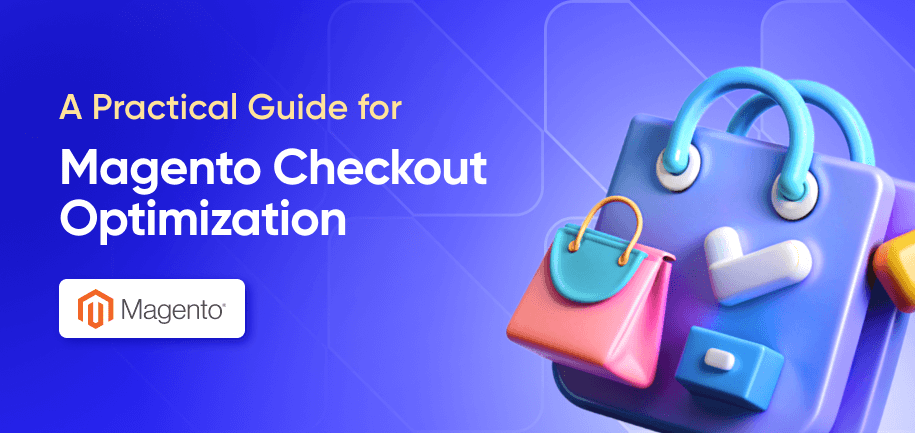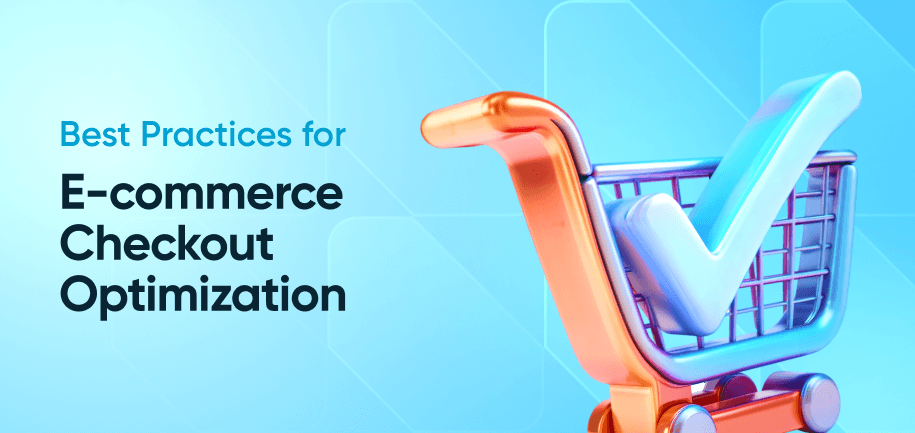Have you ever abandoned an online shopping cart due to a complicated checkout process? Or felt the frustration of a transaction that takes forever? You're not alone. And chances are, your customers have also experienced this in your store.
A seamless checkout experience in e-commerce is a crucial factor for success. It often plays a decisive role in customer retention and overall satisfaction, directly contributing to a boost in sales figures. Are you ready to reshape the way you think about the checkout experience?
Let’s explore some well-crafted checkout processes in real-life examples. See how you can transform this final step of the shopping journey into a powerful tool for customer loyalty and increased sales.
#1: Optimize the Checkout Page
Simplifying the checkout process is a game-changer for your online store, especially when it comes to getting more customers to actually make a purchase. By making the checkout page straightforward and cutting down on extra steps, you can reduce the number of people abandoning their carts before placing an order.
Take Amasty’s One-Step Checkout extension, created to reimagine the default Magento 2 checkout process. The plugin drastically reduces the steps customers need to complete and condenses the entire process to just a single Magento checkout page, which raises the chances of conversion. Viennaticketing, an Austrian box office for classical music events, reported a 40% decrease in cart abandonment since the introduction of One-Step Checkout.
Shopify offers a similar one-click checkout system. Shop Pay enables 100 million shoppers to complete purchases with a single click and contributes to a remarkable 1.72 times boost in conversions. S’wheat, the eco-friendly water bottle producer, uses Shop Pay for its minimalistic checkout that focuses on essential fields and includes an option for email updates, cleverly placed alongside order processing information.
Secure use of saved customer data can further streamline the checkout process. When a customer makes a purchase and chooses to save their information for future use, this data is securely stored in your website's database. As the system already has the necessary details for repeat customers, it not only makes the checkout process faster but also reduces the likelihood of errors during data entry.
In short, it's all about recognizing that a complicated or too-long checkout process can drive customers away. When you streamline things, you're not just making it easier for your customers – you're fixing a common hassle that can boost your sales.
#2: Expand Payment Options for Global Reach
A broad range of payment methods, such as digital wallets and localized payment options, enhances a business's ability to cater to the diverse preferences of international customers. Companies that adopt the global reach strategy and make transactions more convenient for clients all over the world are profiting from the expanded market reach.
We Are Knitters, a Spanish e-commerce site selling knitting kits and products, expanded to 15 countries by seamlessly integrating Stripe with Magento. Leveraging Stripe's flexible payment options to build trust with new customers, the company rapidly adapted to the diverse markets in the US, France, and Germany. And thanks to Magento’s robust integration with Stripe, We Are Knitters maintained the reliability of their services even during an order surge in April 2020.
Another brand – Etsy – recently offered its Etsy Payments to seven new markets: Japan, Ukraine, Argentina, Chile, India, Peru, and Thailand. Since its launch in 40 countries in 2012, Etsy Payments has been letting sellers offer payment via PayPal, major credit and debit cards, Etsy Gift Cards, and Etsy Credits. In addition to this flexibility, Etsy also supports merchants with a Purchase Protection Policy which helps manage any buyer issues and collect financial information in one place.
Expansion to new markets and collaborations with various payment gateways are clear signs of a company’s growth. It also shows a brand’s dedication to enhancing its international customer base and establishing a global presence. Are you ready to profit from a larger audience?
#3: Strengthen Checkout Security
Ensuring security is important at every stage but is particularly critical during checkout – a point in the customer journey where a lot of private information is shared. When a client fills out an order in your store, they trust you to keep their address, card credentials, and other sensitive data safe. And your responsibility is to sustain this trust, showcasing – and proving – dedication to customer privacy.
To provide top security for the entire shopping process and especially checkout, Magento 2 and Shopify regularly update their platforms and address the latest cybersecurity threats. They also actively engage with the cybersecurity community and encourage the reporting of security issues through HackerOne. The platforms openly demonstrate their gratitude to bug hunters on the “Hall of Fame” pages (see Shopify’s and Adobe’s), acknowledging those who contribute to their security measures.
To safeguard shopping experiences beyond the platforms' inherent security measures, you have to stay ahead of potential threats by regularly running security audits and updates. It’s also key to follow e-commerce security best practices: integrating end-to-end encryption and ensuring secure payment gateways during checkout.
Ultimately, when your customers feel secure, they are more inclined to engage with your store. This helps build a stronger connection between you and your clients, which naturally results in more purchases.
#4: Create a Unified Omnichannel Experience
Modern customers expect a smooth transition between online and physical stores, so synchronizing the two through integrated point of sale systems (POS) is an important component of today’s retail strategy. The consistency and convenience offered by such unified systems enhance the overall customer experience and satisfaction.
Sephora’s approach to creating a unified omnichannel experience sets a high standard in the industry. Using Magento, they have seamlessly integrated their website, physical stores, and mobile app to ensure a smooth and consistent shopping experience. Whether customers shop online, use the mobile app or visit a physical store, the Magento responsive checkout powering Sephora’s solution ensures full consistency of the purchasing journey.
The brand also demonstrates how to effectively and securely use POS data in cross-channel service personalization. By combining real customer data (checkout product history) with their predictive analytics and personalized quizzes, the brand fosters truly meaningful connections and boosts customer loyalty.
Sephora’s checkout journey could be even more cohesive and customer-centric with the help of Magento’s checkout without payments feature. The brand’s current ‘buy online, pick up at store’ model could be easily enhanced with the ‘...pay cash on delivery' option. This would offer more flexibility and convenience to customers who’d prefer to pay on delivery.
#5: Enhance Order Tracking and Customer Feedback
Advanced order tracking systems that provide real-time updates after the checkout can significantly improve customer experience. Clients value the clarity and reassurance that comes with the ability to monitor order statuses. With these systems in place, you can emphasize that you’re committed to building trust and providing maximum transparency.
Effective post-purchase feedback tools will also help you tune offerings and improve customer experience. By collecting insights from customers after they make a purchase, you can address concerns and refine products and services. When driven by customer feedback, continuous improvement always results in positive growth.
Zappos, a leader in customer-centric retail, is one of such success stories. Their use of advanced technology like Chattermill’s AI-powered platform allows them to deeply understand and enhance the customer journey, ensuring that every service aspect – from checkout to delivery – is optimized for customer satisfaction.
Zappos’ strategy extends even beyond technology to include a culture deeply rooted in customer satisfaction. They offer free shipping and returns, encourage direct communication through easily accessible customer service lines (they even have contact information at the top of every single page of their website!), and focus on creating a risk-free transaction experience.
The brand’s commitment to analyzing and acting on customer feedback has been also integral to its strategy, contributing to its reputation as a brand dedicated to exceptional customer service.
Perfect the Final Step in the Customer Journey: What ‘Pays Off’
Creating an effective checkout for your customers involves simple steps that minimize cart abandonment. First, make buying your products or services easy, and don’t distract them when they’re ready to pay. Give your customers choices in how they pay, so they feel comfortable and won’t be forced to use a payment system they don’t normally use. Keep things secure and make sure your online store works well on various devices. Finally, listen to what your customers say – and learn from it.
Doing all these things together not only makes shopping easy for your customers but also boosts how many people buy from you. In the end, it’s all about making a clear path for your customers. And they'll likely stick around and come back for more if their journeys have been smooth so far.





















